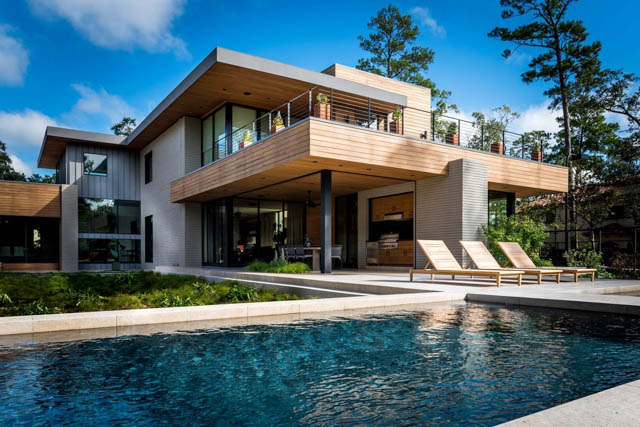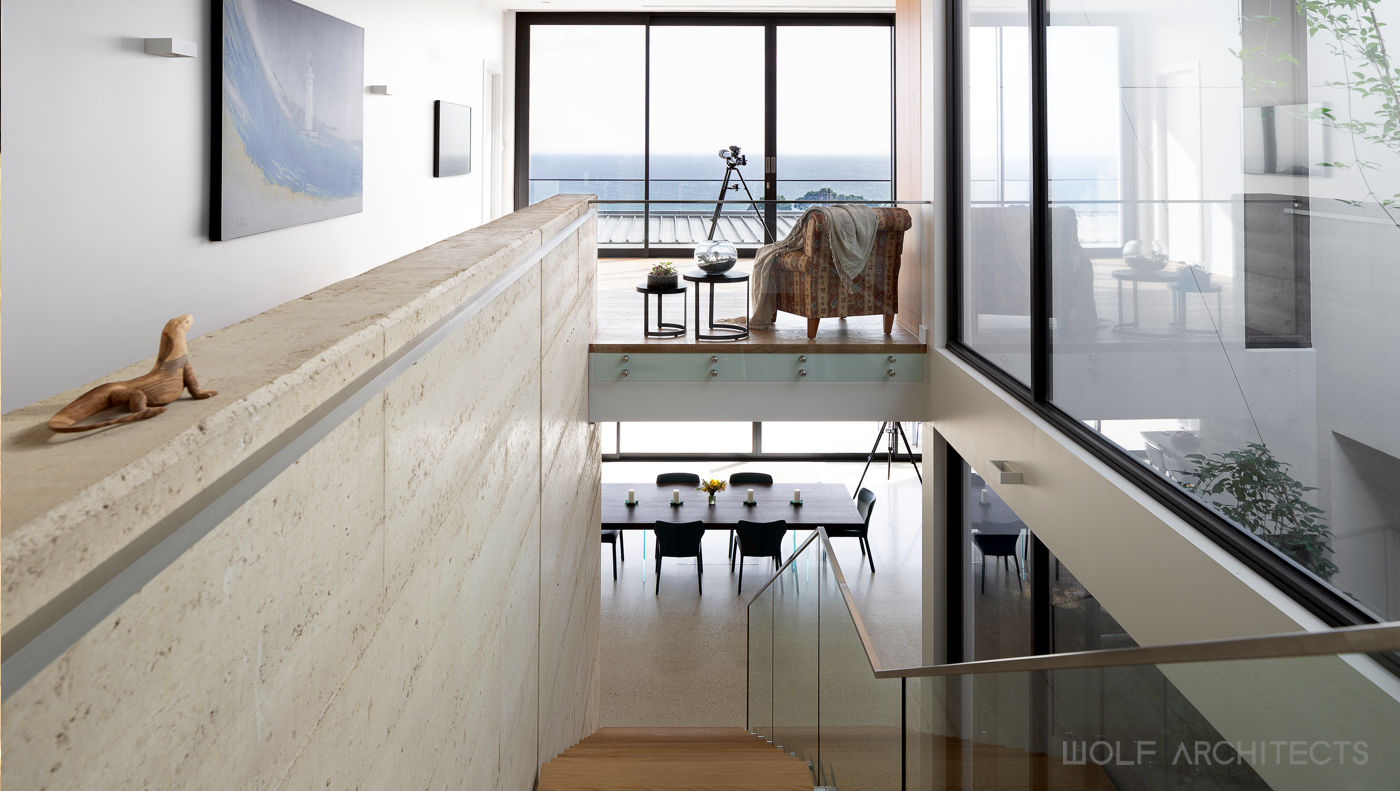Transform Your Home with the Expertise of Leading Residential Architectural Firm
Transform Your Home with the Expertise of Leading Residential Architectural Firm
Blog Article
Leading Fads in Residential Architecture You Need To Know Concerning
As property design continues to progress, several compelling patterns are forming the way we develop and populate our living rooms. Key growths such as sustainable structure methods, the integration of wise home technology, and the increase of modular homes highlight a significant shift in the direction of both functionality and ecological obligation. In addition, principles like open plan living and biophilic style are redefining our communication with space and nature. Recognizing these fads not just informs design selections however additionally reveals wider ramifications for lifestyle and neighborhood - residential house architect. What might these advancements mean for the future of property living?
Sustainable Building Practices
An increasing variety of household projects are accepting sustainable building practices, driven by a growing recognition of environmental impact and energy effectiveness. This shift is identified by the assimilation of environmentally friendly materials, energy-efficient styles, and cutting-edge construction techniques. Homeowners and building contractors are progressively prioritizing the usage of renewable resources, such as bamboo and recycled steels, which not just lower the carbon impact however also improve the resilience and aesthetic charm of residential or commercial properties.
Including energy-efficient systems is one more crucial aspect of lasting building - residential house architect. Functions such as high-performance insulation, energy-efficient windows, and solar panels are coming to be standard in brand-new property styles. These components not only add to reduced power intake yet likewise offer significant long-lasting cost savings for property owners
Furthermore, the layout of sustainable homes typically emphasizes natural light and ventilation, lowering the dependence on man-made lights and climate control systems. Landscape design practices, such as xeriscaping, further promote sustainability by decreasing water usage.
As the need for sustainable living services remains to rise, the property design industry is positioned to adjust and introduce, ensuring that future homes are not just eco liable yet also comfortable and functional for their passengers. - residential house architect
Smart Home Modern Technology
Smart home technology is reinventing the way house owners communicate with their home, boosting power, safety, and convenience administration. This ingenious strategy incorporates various gadgets and systems, enabling users to control their homes remotely or with automated processes. Central to this pattern is making use of wise gadgets such as thermostats, illumination, safety video cameras, and home appliances, all linked by means of the Web of Points (IoT)
One of one of the most attractive functions of clever home technology is the ability to tailor settings for optimum power effectiveness. Property owners can keep an eye on power usage and readjust lights, home heating, and air conditioning based upon their routines, dramatically lowering utility costs. Additionally, advanced safety and security systems geared up with wise locks and monitoring cameras provide comfort, enabling remote surveillance and informs to potential protection breaches.
Combination with voice-activated assistants boosts user experience, allowing property owners to regulate devices with simple voice commands. As innovation remains to advance, the capacity for clever home systems to boost lifestyle expands, making them a necessary consideration in modern-day property design. Inevitably, smart home modern technology is not merely a trend yet a fundamental change towards more smart living environments.
Open Idea Living
Open up idea living has become a specifying function in modern property design, identified by the elimination of conventional barriers between spaces. This style approach advertises fluidity and connection within the home, permitting a smooth change between areas such as the kitchen area, dining, and living areas. By eliminating partitions and wall surfaces, open concept layouts develop a feeling of space, cultivating a welcoming atmosphere that enhances social communication.

In addition, this site technique to household design lines up with minimalism, concentrating on functional simpleness and aesthetic coherence. Homeowners appreciate the versatility of these designs, which can be quickly adapted to mirror personal design via furniture arrangement and decoration. As open concept living remains to obtain traction, it stays a testament to advancing household characteristics and the desire for homes that improve link and convenience.
Biophilic Layout
Biophilic design has actually come to be increasingly substantial in property style, emphasizing the intrinsic connection in between human beings and nature. This design approach seeks to incorporate natural environments into living spaces, thereby promoting a feeling of health and enhancing the lifestyle for passengers. By including attributes such as all-natural light, vegetation, and organic products, biophilic layout advertises a harmonious relationship in between indoor atmospheres and the all-natural globe.
Crucial element of biophilic layout consist of large windows that offer unhampered views of outside landscapes, living walls that introduce greenery right into interiors, and open flooring strategies that motivate air movement and imp source all-natural light infiltration. Water features, both inside and outside the home, serve to develop comforting environments and improve sensory experiences.
Moreover, using lasting materials not just sustains ecological stewardship yet also adds to much healthier interior air top quality. As awareness of ecological problems boosts, homeowners are significantly focusing on layouts that mirror their link to nature. Fundamentally, biophilic style not just raises aesthetic appeal yet likewise addresses emotional and psychological needs, making it a crucial fad in modern property design.
Modular and Prefab Residences

Moreover, modular and prefab homes are developed with sustainability in mind. Lots of producers use energy-efficient systems and environmentally friendly materials, such as solar panels and advanced insulation methods, contributing to reduced energy consumption and lower utility bills for house owners. The adaptability of style alternatives permits modification, satisfying varied functional demands and aesthetic preferences.
As the need for inexpensive real estate remains to climb, modular and prefab homes offer a practical service, attending to both financial and environmental obstacles. Areas are progressively identifying the potential of these frameworks, integrating them into city and country settings. On the whole, the pattern toward prefab and modular homes signifies a change toward much more sustainable, efficient, and versatile living environments, making them a pivotal element of contemporary domestic design.
Conclusion
Sustainable structure practices and smart home technologies boost effectiveness and convenience, while open concept living and biophilic design foster social communication and a link to nature. resource The surge of prefab and modular homes supplies customizable and budget-friendly solutions, reflecting a broader shift towards functional and responsible living.
Key growths such as lasting structure methods, the assimilation of smart home technology, and the increase of modular homes highlight a significant shift towards both functionality and environmental duty.The surge of prefab and modular homes has transformed the residential style landscape, supplying cutting-edge options for reliable and lasting living.Additionally, prefab and modular homes are made with sustainability in mind. On the whole, the trend towards modular and prefab homes signifies a shift toward more sustainable, reliable, and versatile living settings, making them a critical facet of modern domestic design.
Lasting building methods and smart home technologies improve effectiveness and benefit, while open idea living and biophilic style foster social communication and a connection to nature.
Report this page